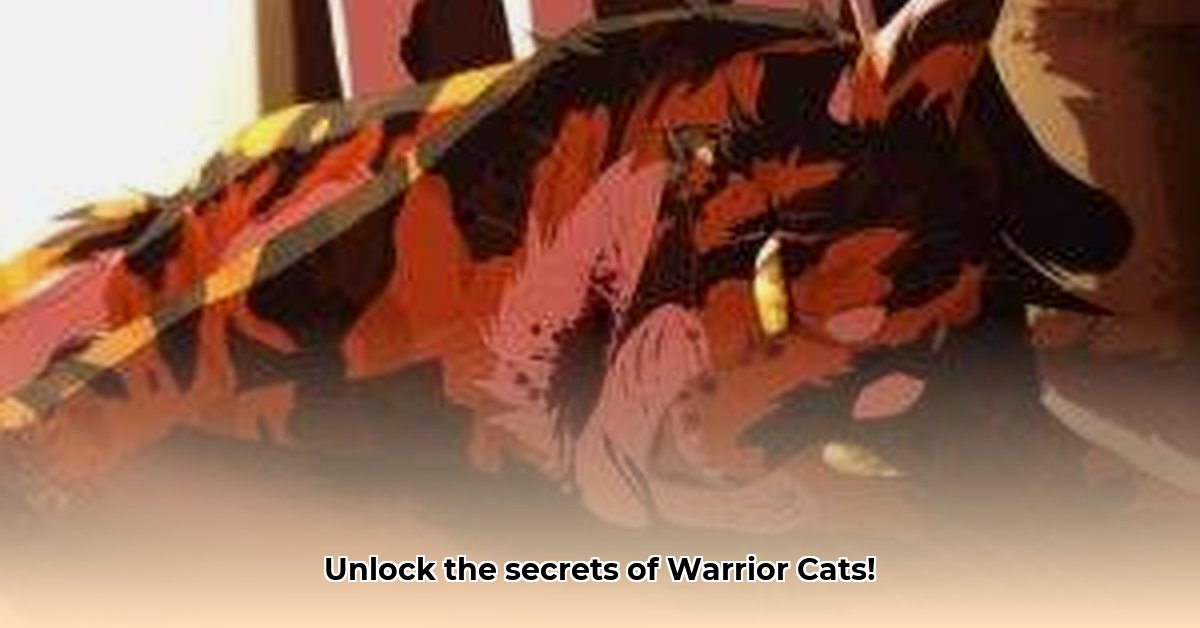
Warrior Cats Clan Terminology: A Linguistic Exploration
The world of Erin Hunter's Warrior Cats series is more than just thrilling battles and captivating characters; it's a meticulously crafted society with its own rich and nuanced language. Understanding this linguistic landscape is key to unlocking a deeper appreciation for the series' intricate plotlines, complex characters, and the evolving dynamics of the clans. This guide offers a comprehensive exploration of Warrior Cats terminology, bridging the gap between casual enjoyment and in-depth academic analysis.
Clan Life: Roles, Responsibilities, and Linguistic Reflections
Warrior Cats clans function as tightly-knit communities, with each cat occupying a specific role. This social structure is mirrored in the series' unique vocabulary. "Kits" (kittens) represent new life and clan continuity. As they mature, they become "apprentices," undergoing training under the guidance of experienced mentors. Upon completing their training, they graduate to "warriors," the skilled protectors of their clan. Finally, in their twilight years, cats transition to the role of "elders," respected for their wisdom and past contributions. The "medicine cat," a unique and essential role, provides healing and spiritual guidance. The specific terminology, and the emphasis given to each role, evolve subtly across the book series, mirroring real-world societal shifts and hinting at the dynamic complexities of the fictional clans. How does the evolving description of the Medicine Cat's role reflect changes in societal expectations over the course of the series?
Beyond Job Titles: Metaphors, Similes, and Figurative Language
The linguistic richness of Warrior Cats extends beyond simple job titles, employing metaphors and similes to paint vivid pictures of characters and their world. Insults, for instance, often draw on imagery of prey animals, reflecting the harsh realities of survival. A "mouse-brain" isn't a literal description but rather a scathing insult implying foolishness. Similarly, "crow-food" or "mouse-dung" are not merely factual statements, but potent expressions of contempt. The author’s use of animal similes, such as "swift as a weasel" or "sharp as a thorn," adds depth and intrigue to character descriptions, providing insight into their personalities and potential. This vibrant use of figurative language allows the authors to convey complex emotions and subtle nuances of character within the limitations of feline communication.
Euphemisms, Subtle Shifts, and Linguistic Evolution
The authors skillfully employ euphemisms—indirect expressions—to address sensitive topics within the clans. This subtlety adds another layer of complexity, reflecting the intricate social dynamics and unspoken tensions within the clans. Furthermore, the language itself undergoes subtle evolution throughout the series. Words may acquire new meanings, connotations may shift, and new terms emerge to reflect developing relationships and evolving societal structures. This linguistic dynamism is a testament to the vibrant and ever-changing nature of the Warrior Cats world. What insights can be gleaned from tracing the evolution of specific terms and their changing connotations throughout the series?
StarClan and the Supernatural Dimension
The spiritual realm of StarClan, inhabited by the spirits of deceased cats, introduces another dimension to the clans' language. References to StarClan frequently carry profound implications, hinting at guidance, hope, fear, or even judgment. Understanding this terminology enriches the reader’s comprehension of the cats' beliefs and their interconnectedness with the spiritual world. A deeper investigation into the recurring symbols and themes associated with StarClan promises to reveal further insights into the narrative's central themes and the authors' intentions. How does the language surrounding StarClan reflect the evolving beliefs and spiritual practices of the clans?
A Deeper Dive: Key Terms and Further Exploration
| Term | Meaning | Example | Potential Nuances |
|---|---|---|---|
| Kit | Young cat | "The queen is expecting a litter of kits." | Reflects the importance of new life and clan continuity |
| Apprentice | Cat in training | "Lionpaw is now apprenticed to Firestar." | Highlights the mentorship aspect and skill development |
| Warrior | Trained fighter | "Graystripe is a loyal and brave warrior." | Signifies skill mastery, loyalty, and role within clan |
| Elder | Retired cat | "The elders gathered to share stories of the past." | Represents wisdom, experience, and the passing of knowledge |
| Medicine Cat | Clan healer | "Spottedleaf, our wise medicine cat, treated the injured kit." | Emphasizes healing, knowledge of herbs, and spiritual connection |
| Rogue | Wild cat not belonging to a clan | "Several rogues attacked the ThunderClan border." | Implies danger, threat, or potential conflict |
| Loner | Solitary cat, independent of clans | "The loner lived peacefully beyond the borders." | Suggests solitude and independence |
Further Exploration:
Comparative Clan Studies: Analyze the language used by different clans. Do their distinct vocabularies reflect their unique personalities and cultural nuances?
Linguistic Evolution: Track changes in language across the series. How do these shifts in meaning and usage reflect character development and the evolving narrative?
Creating a Warrior Cats Lexicon: Collaboratively build a comprehensive dictionary defining key terms, their usage, and contextual nuances across the series.
This in-depth exploration of Warrior Cats terminology offers a pathway to a richer and more nuanced understanding of the series. By analyzing the nuanced language patterns, metaphors, and subtle shifts in meaning, readers can unravel deeper layers of meaning, enriching their connection with the characters, the clans, and the world of Warrior Cats itself.